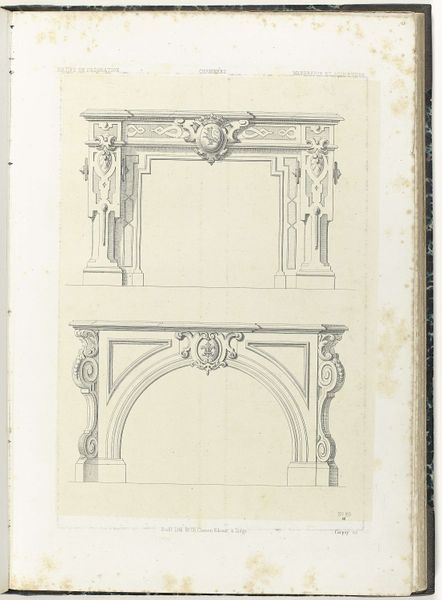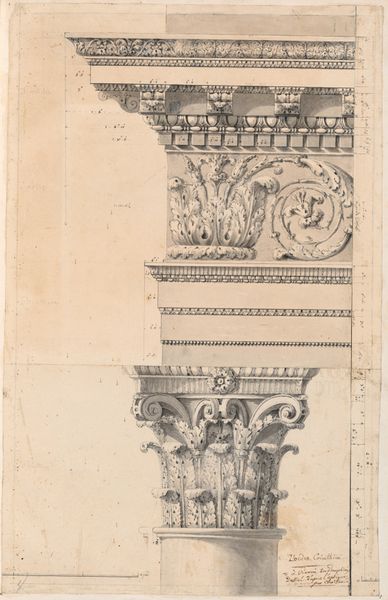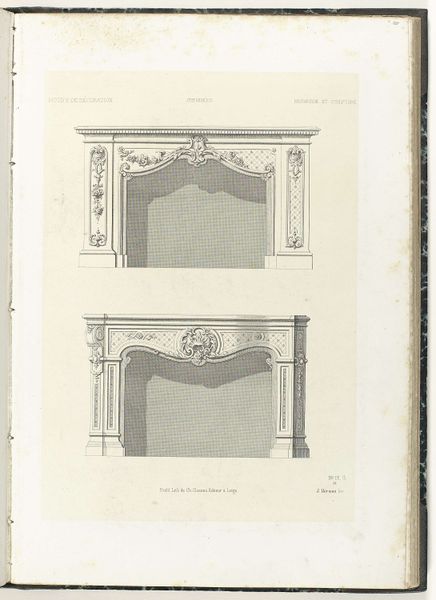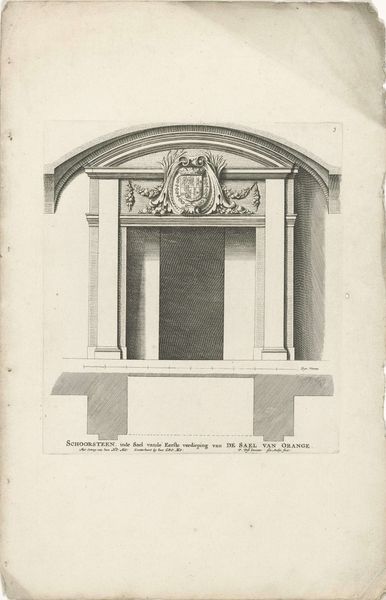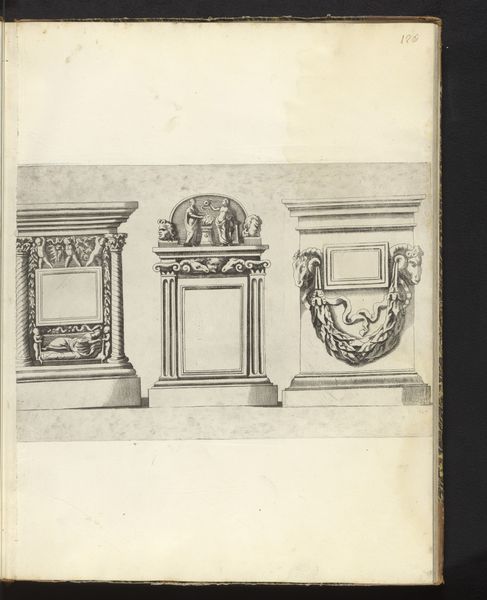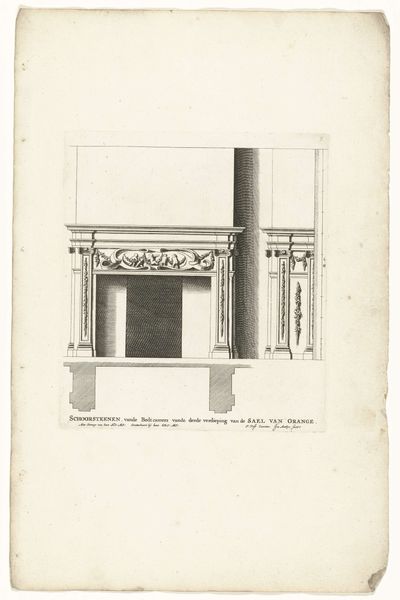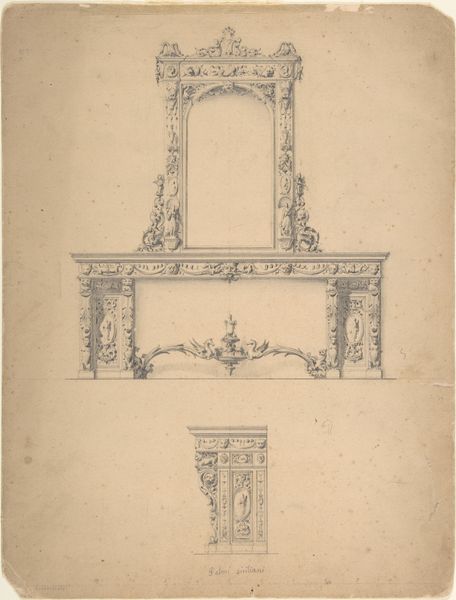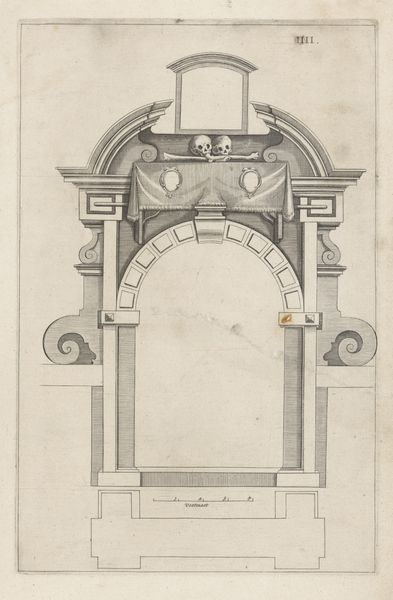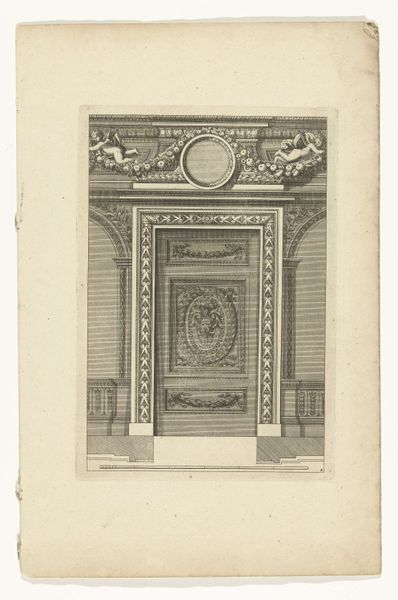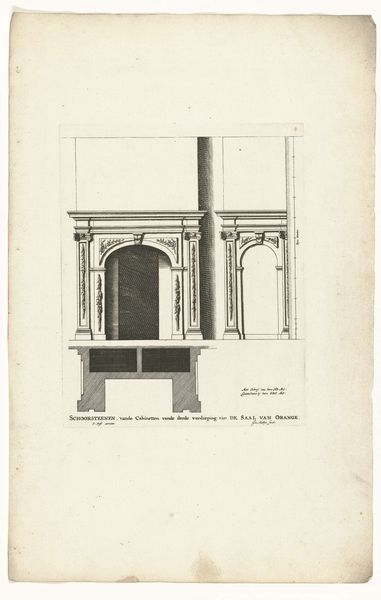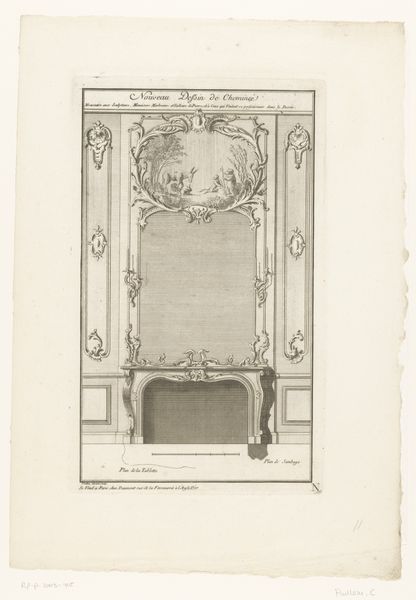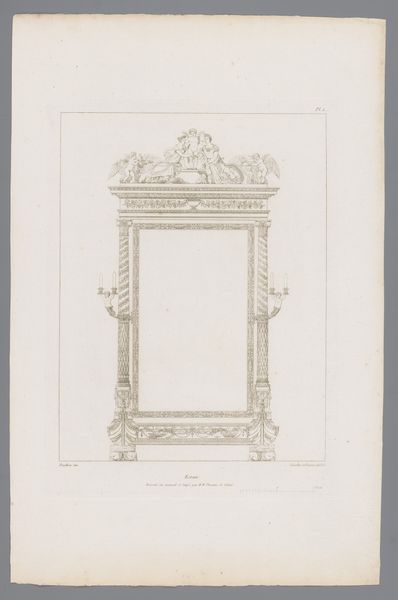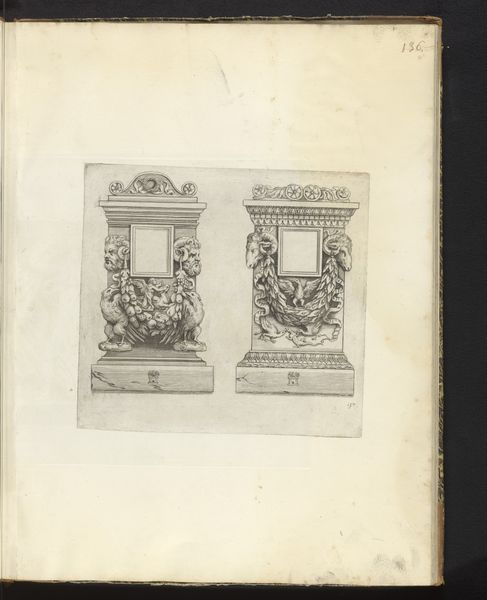
drawing, paper, ink, engraving
#
drawing
#
paper
#
form
#
ink
#
geometric
#
line
#
decorative-art
#
engraving
Dimensions: height 418 mm, width 290 mm
Copyright: Rijks Museum: Open Domain
Curator: Welcome. Here we have "Boven- en onderkant van onderboezem," which translates roughly to "Top and bottom of a bodice", created circa 1866-1900. It’s a drawing executed in ink and engraving on paper, made by Charles Claesen. Editor: It strikes me as a study in symmetry. Very meticulously rendered, almost sterile, though the floral details soften it a bit. Is this some kind of architectural plan? Curator: Indeed. The work depicts an elaborately designed fireplace. Focus on how Claesen meticulously delineates the different planes. The patterned backdrop, the arch of the firebox, and the detailed molding are constructed through very fine, decisive lines. Editor: What was the function of pieces like this? Was it purely for design proposals, or something more symbolic? Because there are no traces left behind other than a line. Curator: Architectural renderings such as this served multiple purposes. Certainly, design and presentation were key, intended to showcase the proposed craftsmanship for potential clients or patrons. In 19th-century Europe, this represented an increased professionalization of decorative arts. Mass manufacturing drove an expansion in printed designs to widen and cater for a new demand. Editor: It’s interesting to think about the interplay between craft and industrial production here. These refined details could be re-created. What are the choices regarding its composition doing here? The symmetry gives it such weight and composure. Curator: The very format reinforces these social dynamics of art in general. Symmetry and repetition emphasize standardization. These motifs could be replicated at scale, facilitating efficient, aesthetically 'correct' production for bourgeois domestic life. Editor: It speaks to the values of the era—order, prosperity. Curator: Precisely, values embodied in the hearth, both functional and symbolic centerpiece. One where, presumably, you wouldn't actually notice the artisan who facilitated this particular piece being set in motion and distributed to mass society. Editor: Thank you. Thinking about the architectural function against its cultural symbolism has truly shifted my perspective. Curator: A stimulating encounter to contemplate art's interplay between form, societal need, and power.
Comments
No comments
Be the first to comment and join the conversation on the ultimate creative platform.
